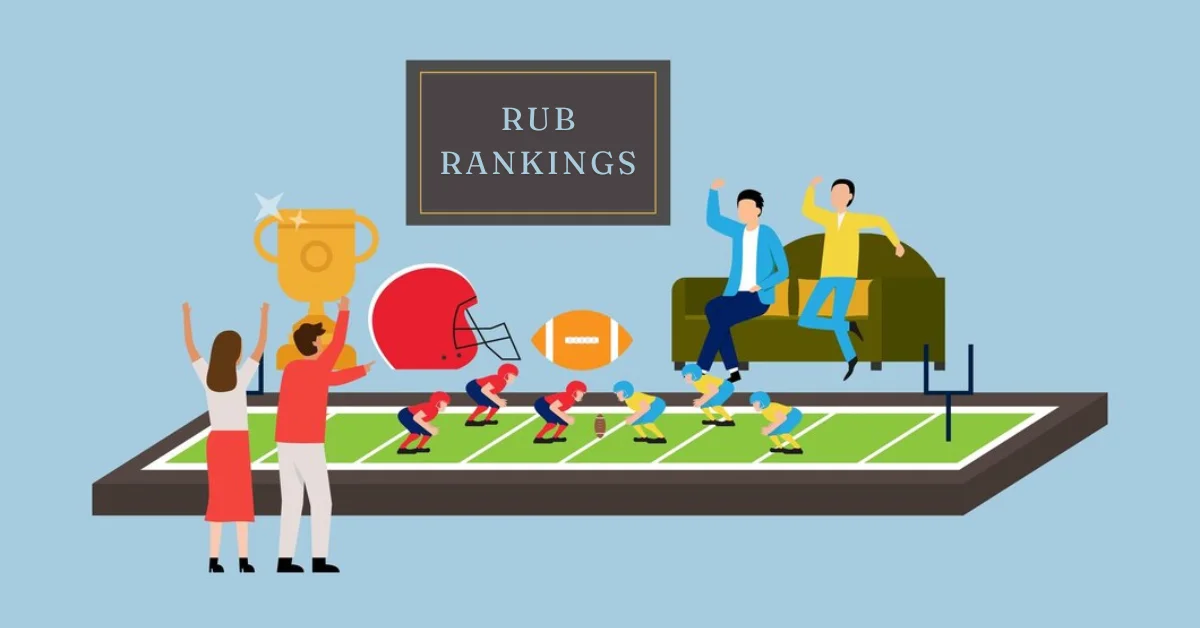Introduction to Rub Rankings
Rub rankings have become a pivotal part of the sports landscape, shaping how athletes are perceived and how teams strategize. From football to basketball, understanding these rankings is essential for fans and professionals alike. But what exactly are rub rankings? How did they come to influence the sporting world so significantly?
In this exploration, we’ll delve into the history of rub rankings, their impact on athletes’ careers, and the controversies that surround them. Whether you’re an aspiring athlete or a dedicated fan, grasping this concept can enhance your appreciation for the games you love. Let’s dive deep into the realm of rub rankings and discover their integral role in sports today!
ALSO READ: Leatheling Game: A Fantasy Adventure Like No Other
The History and Evolution of Rub Rankings in Sports
Rub Rankings began as a simple way to gauge athlete performance in various sports. Originally, they focused on basic statistics. As the demand for more comprehensive insights grew, so did the complexity of these rankings.
In the early days, ranking systems relied heavily on win-loss records and basic metrics. However, advancements in data analytics transformed how athletes are evaluated. Today’s Rub Rankings incorporate an array of factors—from individual statistics to team dynamics.
Over time, different sports have adopted unique methods tailored to their specific needs. For instance, basketball utilizes player efficiency ratings while soccer often looks at goal contributions and assists.
The evolution has made rub rankings more relevant than ever before. Athletes now find themselves under intense scrutiny through detailed evaluations that go beyond traditional stats—an exciting development that continues to shape competitive landscapes across all sports.
How Rub Rankings Affect Athletes?
Rub rankings significantly influence athletes’ careers and opportunities. These rankings provide a clear benchmark for performance, often determining eligibility for competitions and sponsorships.
Athletes strive to improve their standings. A rise in rub ranking can lead to enhanced visibility and marketability. Brands are keen on associating with top-ranked performers, which translates into lucrative endorsement deals.
Moreover, these rankings foster healthy competition among peers. Athletes push each other to excel, raising the overall standard within their sport.
Conversely, falling in rank can be discouraging. It may impact an athlete’s confidence or mental state, leading to increased pressure during competitions.
The implications of rub rankings extend beyond individual athletes; they shape team selection strategies as well. Coaches and scouts closely monitor these metrics when assembling rosters for games or tournaments.
Controversies Surrounding Rub Rankings
Rub rankings are not without their fair share of controversies. Critics argue that the metrics used to calculate these rankings can be misleading. Often, they rely heavily on subjective data and performance history, which may not accurately reflect an athlete’s current form.
Another point of contention is the impact of rub rankings on player morale. Athletes may feel undue pressure to maintain or improve their standings, leading to anxiety and burnout. This mental strain can affect performance negatively.
Moreover, fans and analysts sometimes debate the fairness of ranking systems across different sports disciplines. What works for one sport might not apply well in another context, creating inconsistencies that fuel disagreement among stakeholders.
There’s a growing concern about how rub rankings’s influence recruitment decisions. Coaches may prioritize athletes based solely on their ranking rather than potential or team fit, raising questions about broader implications in talent development.
Advantages of Rub Rankings for Athletes and Teams
Rub rankings’s serve as a powerful tool for athletes and teams, offering valuable insights into performance metrics. They help identify strengths and weaknesses across various competitions.
Athletes can measure their progress against peers, motivating them to push beyond limits. This constant evaluation fosters a culture of improvement within teams.
Additionally, rub rankings’s enhance visibility in the sports community. Recognition through these rankings can open doors to sponsorships and endorsements that might otherwise remain inaccessible.
Teams benefit too; they can strategize better with data-driven decisions based on ranking trends. Coaches use this information to tailor training programs specifically aimed at elevating team performance.
Moreover, fans engage more deeply when they track player standings, adding excitement to competitions. The transparency of rub rankings’s creates an inclusive environment where achievements are celebrated collectively.
The Future of Rub Rankings in Sports
The future of rub rankings’s in sports is poised for significant transformation. As technology advances, data analytics will play a larger role. Real-time updates and more precise metrics could change how we view athlete performance.
Fans are becoming more engaged with interactive platforms that offer personalized insights. This trend means rub rankings’s may evolve into a more dynamic experience, catering to individual preferences.
Additionally, the integration of AI in evaluating player skills and team dynamics can refine these rankings further. Machine learning algorithms might provide deeper analysis that was previously unattainable.
With global competitions on the rise, standardizing rub ranking systems across different leagues could also become crucial. It would create a level playing field and enhance cross-league comparisons.
As athletes gain access to sophisticated training tools based on real-time data from rub rankings’s, their performances could reach new heights. The landscape is changing rapidly; staying adaptive will be key for all involved.
Conclusion
Rub rankings have transformed how athletes and teams are evaluated in the sports world. While these rankings can create opportunities, they also bring challenges that must be navigated carefully.
Understanding the nuances of rub rankings is crucial for athletes aiming to maximize their potential. Coaches, fans, and analysts alike should remain vigilant about their implications as they continue to evolve.
As we look ahead, it’s clear that rub rankings will play a pivotal role in shaping the future landscape of sports. Keeping an eye on these changes will help everyone involved adapt and thrive in this dynamic environment.
ALSO READ: Network Addon Mod 49 Development: Expanding SimCity Horizons
FAQs
What is “Rub Rankings”?
Rub rankings are performance-based rankings used in sports to evaluate athletes. They consider various factors, from basic statistics to advanced metrics like player efficiency, and are used to assess athletes’ standings within their respective sports.
How are rub rankings’s calculated?
Rub rankings’s are calculated using a combination of factors such as individual performance stats, team dynamics, and historical performance. These rankings evolve over time as more sophisticated data analytics are incorporated.
How do rub rankings’s impact an athlete’s career?
Rub rankings’s can significantly affect an athlete’s career by influencing sponsorship opportunities, team selection, and public perception. A higher rank can lead to better visibility and endorsement deals.
What are the controversies surrounding rub rankings’s?
Some critics argue that rub rankings’s rely too much on subjective data and can misrepresent an athlete’s current form. Additionally, rankings can place undue pressure on athletes, affecting their performance and mental health.
What is the future of rub rankings in sports?
The future of rub rankings looks promising with advancements in data analytics and artificial intelligence. Real-time updates and more precise metrics are expected to make rankings even more dynamic, providing fans and athletes with deeper insights into performance.











